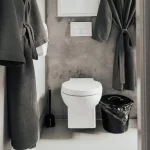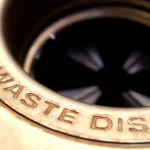If you live in one of Toronto’s older homes, there’s a good chance you still have an old-style kitchen sink. You know – the single, stainless steel basin that’s half the size you need, with ancient faucets and a kitchen drain that blocks every time you look at it. But when it comes time to renovate and upgrade your kitchen, how do you choose the right type of setup for your needs? Here are a few pointers to help you decide.
Single or Double-Bowl
Our plumbers in Toronto are consulted often on how many sinks to install in a home. We usually respond that deciding on the number of sinks you need generally depends on two things:
- The size of your kitchen, and
- The size of your family – particularly the number of people working in the kitchen at one time.
In a studio apartment, you probably don’t need more than a single bowl unless you entertain a lot, or perhaps a single bowl with a bar sink. For a larger home, however, the National Kitchen & Bath Association recommends a 22X24-in. single-bowl model for kitchens smaller than 150 sq. ft. If your kitchen is bigger than that, a double or even triple bowl lets you handle dishes in one sink while you use the other for rinsing vegetables. Keep in mind that to install a second sink of any size you need a second outlet leading to your kitchen drain.
Stainless Steel or Composite
Stainless steel is the most common choice in sinks, being relatively durable, affordable and easy to keep clean. Sinks are also available in a variety of other materials, including porcelain, fireclay, cast iron, fiberglass, and various composite materials. Some are less practical than others, so the success of your choice depends on several factors, including what you plan to do with the sink.
- If you wash dishes by hand, a porcelain or fiberglass sink is unsuitable for heavy pots and pans.
- Installation of heavy cast iron or fireclay sink depends on the type of countertop or sink surrounds. A granite or marble top can support the weight of these materials, while a lightweight wooden one won’t be able to do so as easily.
Some of the newer composite materials are lightweight, durable and easy to maintain, but plumbers in Toronto report that these may cost more to purchase and install.
Higher or Lower Gauge
If your heart is set on the standard stainless steel type sink, you might wonder whether the gauge has anything to do with your choice. The American Consumer Association tested sinks made from stainless steel in 18 to 23 gauge and found that the lower the gauge, the thicker the steel was. Researchers also tested the noise made by the water running into the sink and found that the gauge made no difference to the sound levels. What did make a difference, however, was the addition of sound-absorbing pads on the outside of the sink. The sink you choose should be compatible with the fittings for your kitchen drain, otherwise, you’ll need to upgrade the drain installation at the same time.
White or Colourful
If you choose a material other than stainless steel you’ll find white fittings typically cost less, but color accents in kitchens are currently a hot trend, according to our plumbers in Toronto. Pastel shades are best in the long-term because definitive colors tend to become stale after a while and the last thing you need is to have to refit your sink and kitchen drain every couple of years. Composite materials offer a wide range of sinks in different colors, which can be color-coded to tone with the surrounding kitchen.
When you’re planning to upgrade your kitchen drain or sink, consult with your plumber before you start to make sure you choose the right products for your home. This will help you avoid spending money on fittings that aren’t suitable and enable you to create the kitchen you’ve always wanted.






